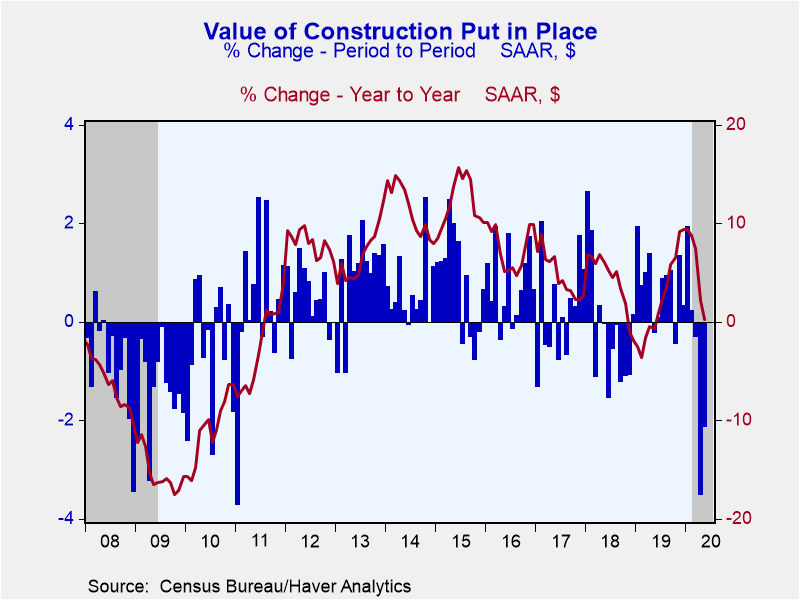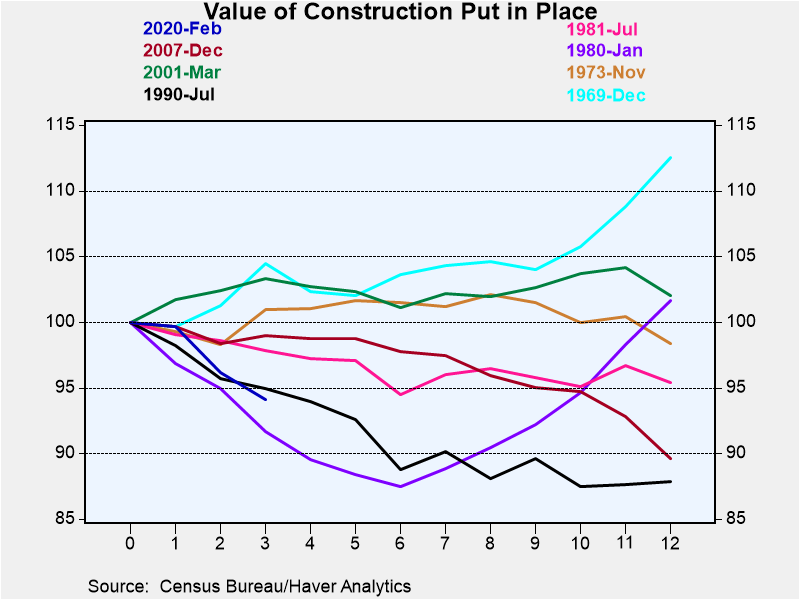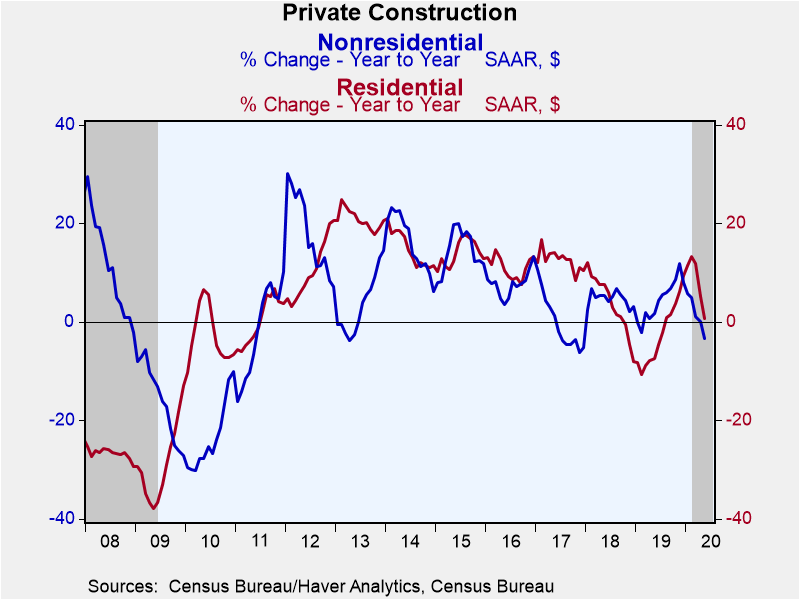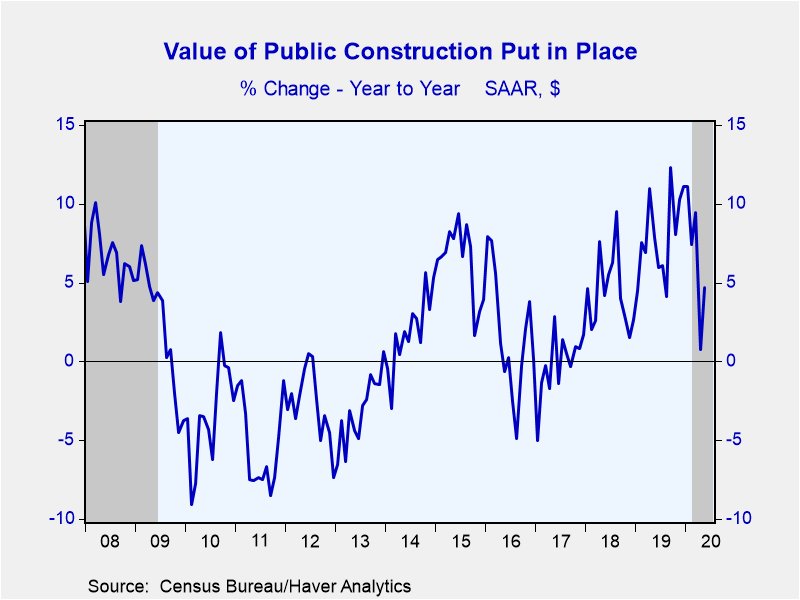 Global| Jul 01 2020
Global| Jul 01 2020U.S. Construction Falters
Summary
• Construction spending dropped 2.1% in May with downward revisions to previous months. • The 5.9% decline in construction since February looks closer to previous recessions than many other economic statistics. The value of [...]
• Construction spending dropped 2.1% in May with downward revisions to previous months.
• The 5.9% decline in construction since February looks closer to previous recessions than many other economic statistics.
The value of construction put-in-place unexpectedly fell 2.1% in May (+0.3% year-on-year). The Action Economics Forecast Survey anticipated a 1.0% gain. Spending in April and March were revised down to -3.5% and -0.3% respectively from -2.9% and unchanged. Since the February peak in economic activity construction spending has fallen 5.9%, which looks closer to previous recessions than many other economic statistics.
In the revised first quarter GDP report released last week private construction spending (nonresidential + residential) added 0.72 percentage point to GDP growth. Today's data points to a slight downward revision to Q1 and a meaningful decline in Q2.
Private construction fell 3.3% in May (-1.2% y/y). Private residential construction dropped 4.0% (+0.7% y/y) driven by an 8.5% collapse in single family (-4.4% y/y). Multifamily rose 2.3% (-5.6% y/y) while improvements edged up 0.1% (11.5% y/y). Nonresidential private construction declined 2.4% in May (-3.4% y/y) with the four largest sectors -- commercial, manufacturing, office and power -- all down.
Public construction increased 1.2% (4.7% y/y) with nonresidential, which makes up 98% of public construction, up the same amount (4.2% y/y). The two largest sectors road and school building increased. If not offset by federal government support, the drop in state and local government revenues resulting from the COVID related collapse in economic activity will likely lead to substantial weakness in public construction.
The construction spending figures, some of which date back to 1946 can be found in Haver's USECON database. Mortgage interest rates and loan applications from the Mortgage Bankers Association are in the SURVEYW database and the expectations reading is in the AS1REPNA database.
| Construction Put in Place (SA, %) | May | Apr | Mar | May Y/Y | 2019 | 2018 | 2017 |
|---|---|---|---|---|---|---|---|
| Total | -2.1 | -3.5 | -0.3 | 0.3 | 0.0 | 3.3 | 4.5 |
| Private | -3.3 | -3.8 | -1.1 | -1.2 | -2.2 | 3.2 | 6.0 |
| Residential | -4.0 | -5.1 | -0.8 | 0.7 | -4.5 | 2.8 | 12.4 |
| Nonresidential | -2.4 | -2.3 | -1.5 | -3.4 | 0.5 | 3.7 | -0.7 |
| Public | 1.2 | -2.7 | 2.3 | 4.7 | 6.9 | 3.6 | -0.1 |
Gerald D. Cohen
AuthorMore in Author Profile »Gerald Cohen provides strategic vision and leadership of the translational economic research and policy initiatives at the Kenan Institute of Private Enterprise.
He has worked in both the public and private sectors focusing on the intersection between financial markets and economic fundamentals. He was a Senior Economist at Haver Analytics from January 2019 to February 2021. During the Obama Administration Gerald was Deputy Assistant Secretary for Macroeconomic Analysis at the U.S. Department of Treasury where he helped formulate and evaluate the impact of policy proposals on the U.S. economy. Prior to Treasury, he co-managed a global macro fund at Ziff Brothers Investments.
Gerald holds a bachelor’s of science from the Massachusetts Institute of Technology and a Ph.D. in Economics from Harvard University and is a contributing author to 30-Second Money as well as a co-author of Political Cycles and the Macroeconomy.
More Economy in Brief
U.S. Federal Government Budget Deficit Expands in First Half of FY’25
by:Tom Moeller









